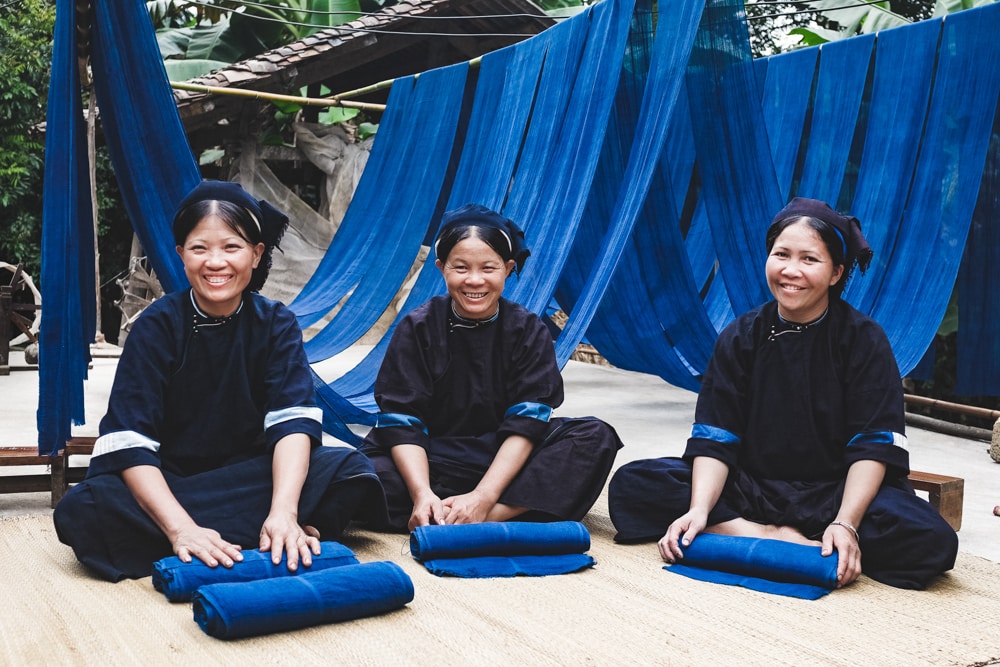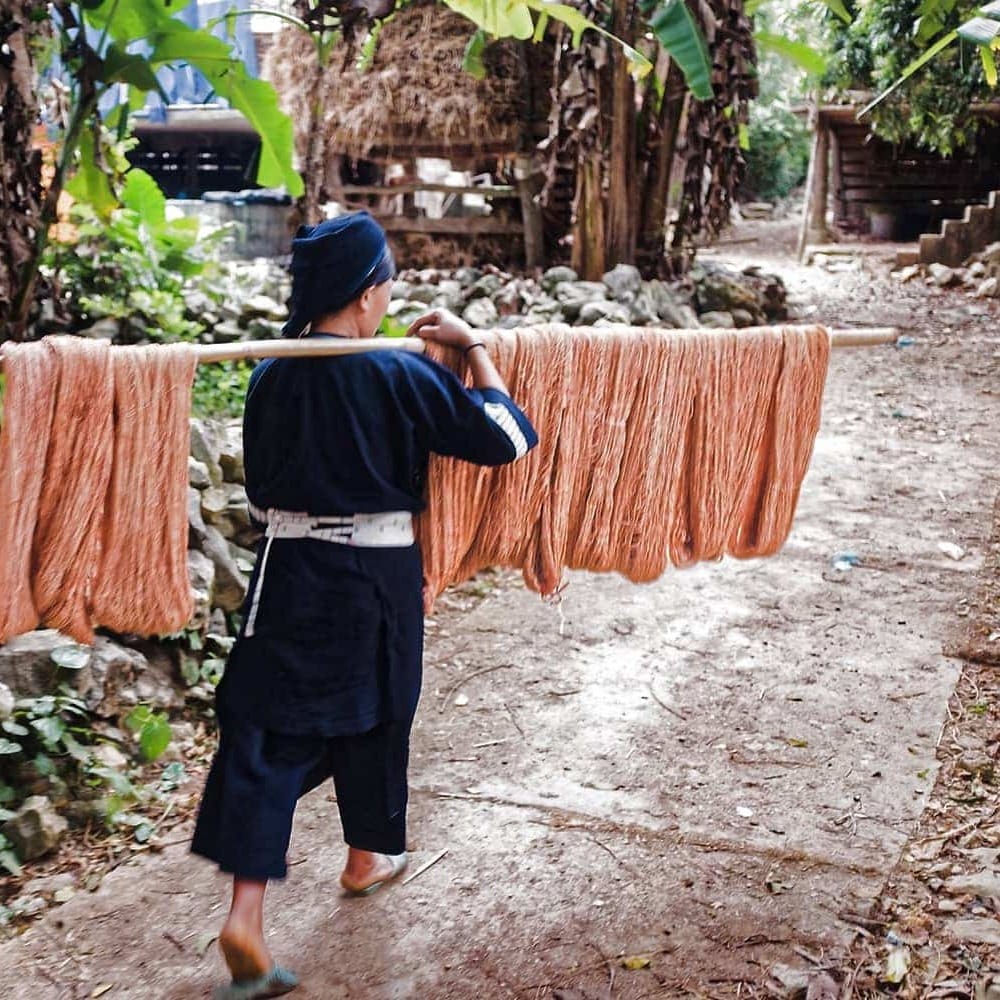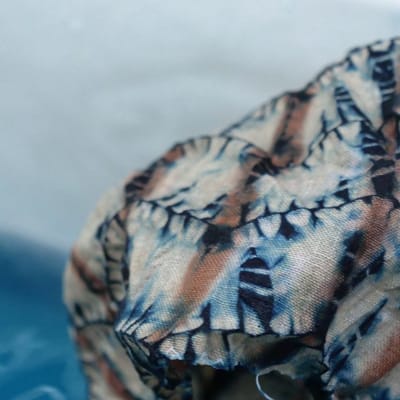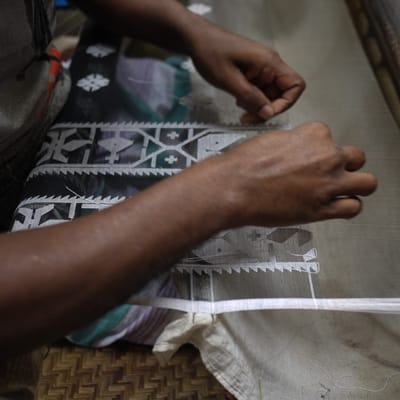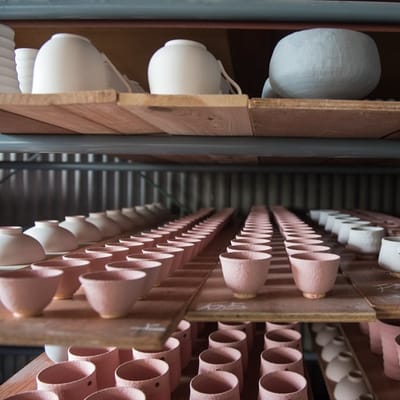Ever since she was a little girl, stories of faraway places have stirred the imagination of designer Thảo Vũ."My dad was a diplomat and he traveled around the world during the late 1970s and 80s.", says Ms. Vũ, founder of Hanoi-based fashion label Kilomet109. When her father returned every few years to their rural hometown of Thái Bình, he would tell his family about winding train journeys from Asia to Europe and wanderings through the streets of foreign cities.
"It would become like a dream for you," Vũ says.
Her father's homecoming also meant gifts for Vũ and her siblings — books in foreign languages, baby dolls from Russia — and he'd often take her to the mobile cinema shows which traveled around Vietnam before the arrival of malls and multiplexes (the movies were Russian and revolution-themed, she says, but her favorite was an American film—"One Flew Over The Cuckoo’s Nest”).
These early exposures to storytelling and global culture stoked Vũ's curiosity and put her on a path that, eventually, led her to create Kilomet109. The label's kinetic and worldly designs, she says, come from her love of exploration and for the feeling of motion — but they're also rooted in Vietnam's culture of self-reliance and in traditions of local making. Today the label employs nearly 30 artisans and 5 people in her home design studio but, when it launched in 2012, it was a one-woman operation — and Vũ still does all the label's marketing and business development work in addition to designing.

Handmade Beginnings
Vũ grew up in the era before Vietnam reopened to international trade — a time when people made an art of using whatever resources were available to best advantage. “You’d buy food with a ration coupon and there wasn’t much in the market. You couldn’t buy fabric, so you’d have to weave it by yourself. Sometimes we didn't have enough food to eat, but my dad always made sure we had a vase of flowers and a tablecloth — one which he brought from Czechoslovakia — on our table. I remember the patterns and that it was made of felt. Later on, we used it as a blanket."
Not only did her father build their family home, Vũ says, he would paint, do carpentry, and make sculptures. Her mother did all the sewing and clothes-making for the family, while her grandmother made baskets. Vũ and her older sister learned to make clothes for themselves from a very young age, mostly made from recycled bits of her parents' clothes and blankets. “One of my first garments I made for my dad was a blue sky shirt, made by hand — and he kept it until he passed away.”
Thái Bình was surrounded by craft villages, which provided additional inspiration. “At the beginning of my lane, there was a small textile factory which I would pass by on my way to school. I’d hear the sound of it and, sometimes, I’d run inside to see the ladies who worked there. Sometimes they’d let me try my hand at spinning and weaving cotton.”
"I grew up surrounded with so many things that were made by hand," Vũ says.
Her love of books and stories led her to enroll in a school with a special literature-focused curriculum starting in the 6th grade and, eventually, to university degrees in literature and English. Once out of school, Vũ worked as a freelance journalist for over 5 years — often writing for magazines that covered cultural issues. She says that this early career gave her tools to tell the story of her garments and to create a voice for her brand, also crediting the experience as its own kind of design education: "In a lot of Vietnamese literature, we talk about culture — and textiles are a part of the traditional kind of culture in Vietnam. When I studied literature and, later on when I worked for a magazine, I mainly wrote about cultural issues including festivals and fashion. So that kind of connection was really a build up for me to gain knowledge about my own culture."
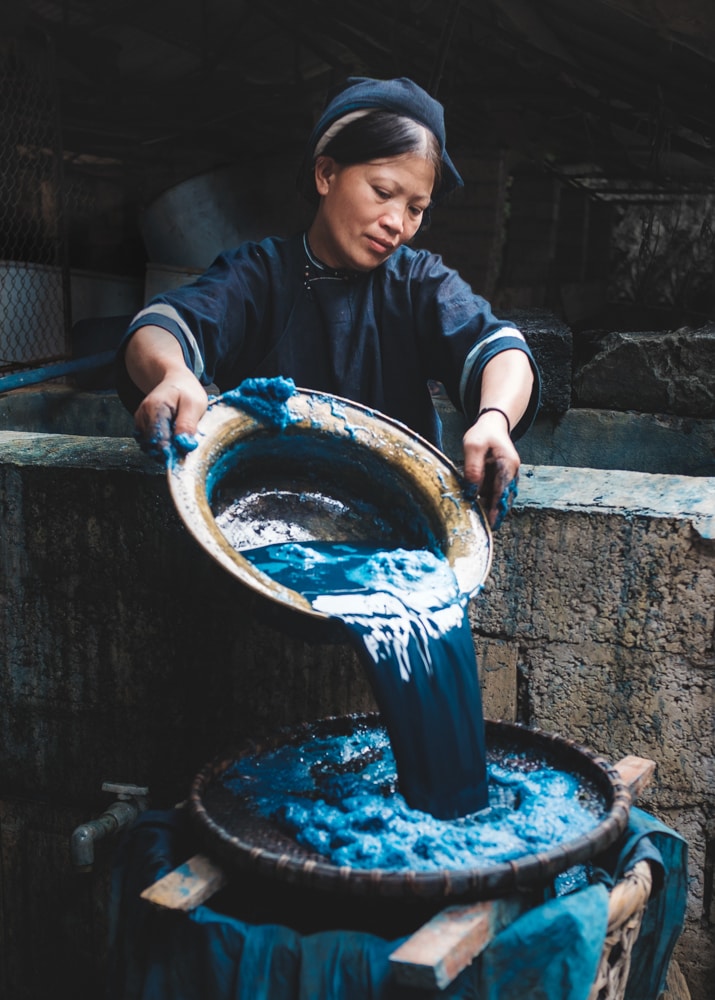
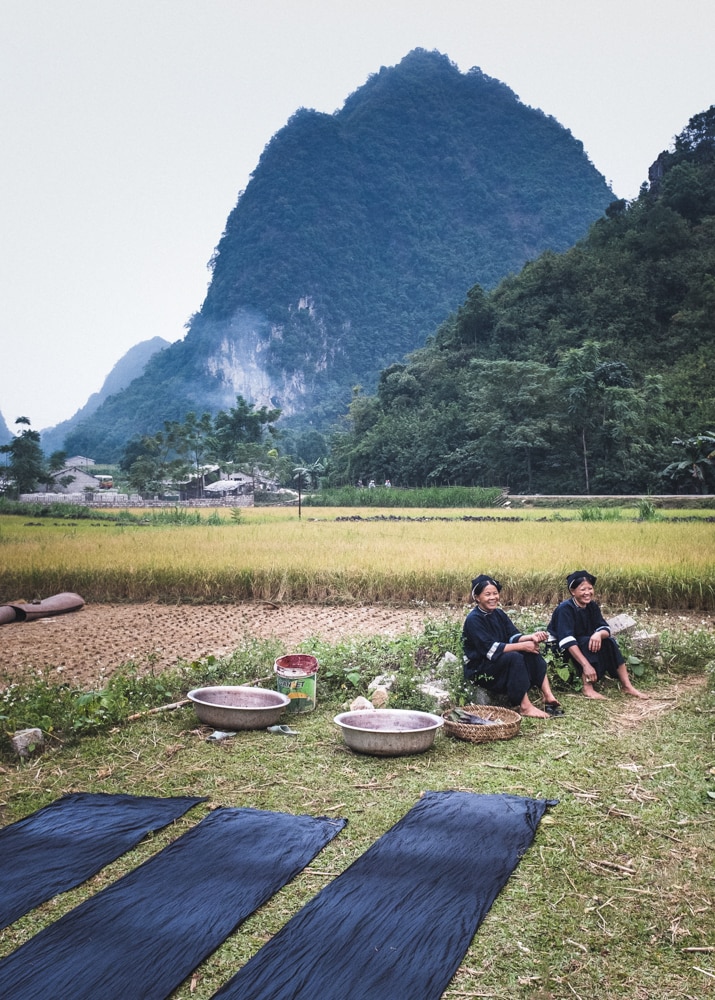
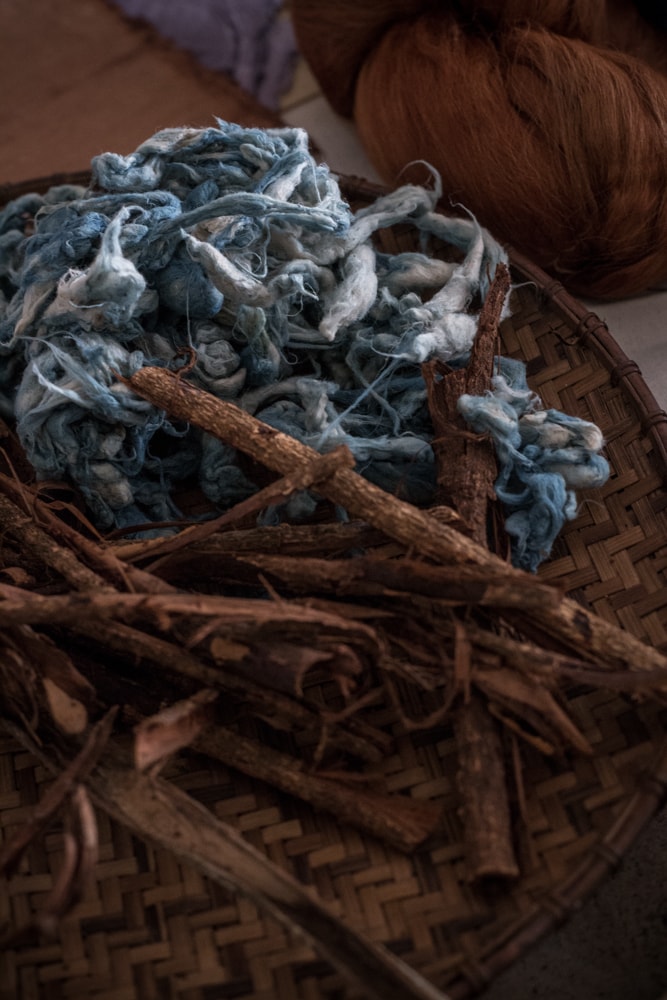
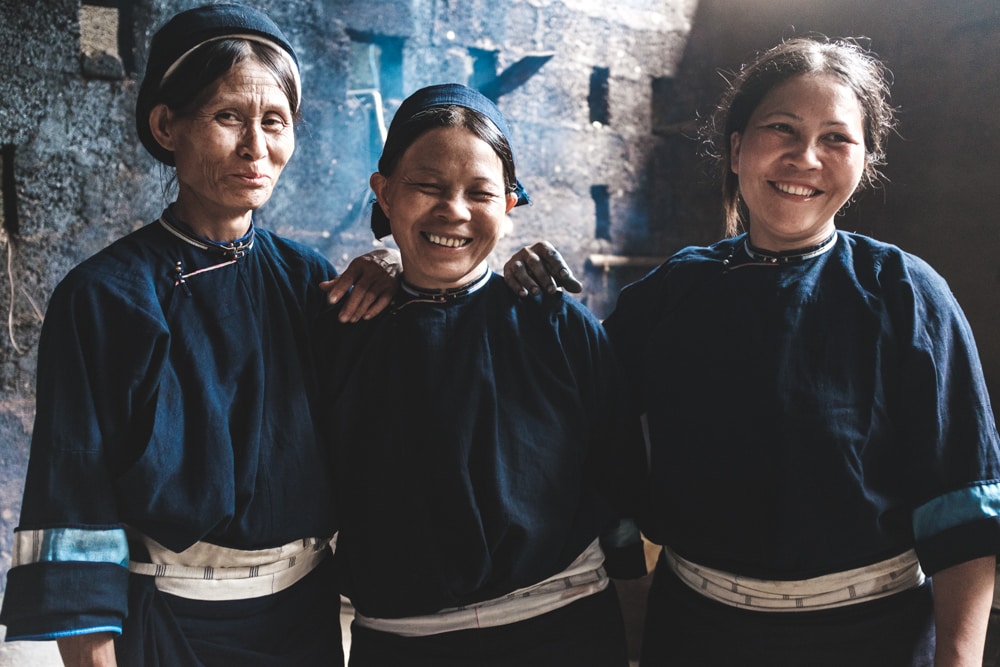
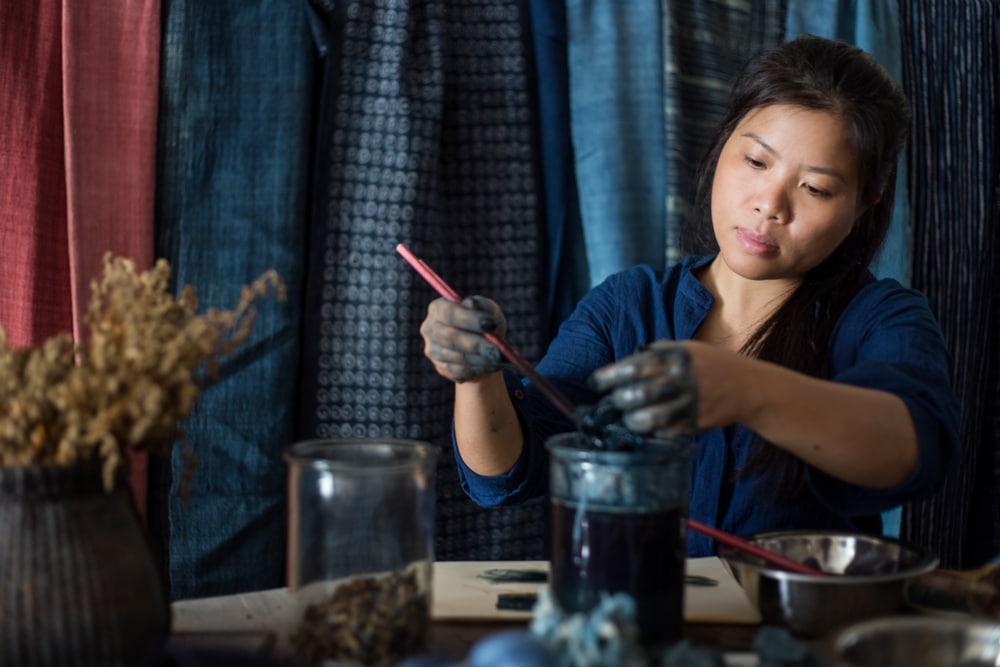
FOUNDATIONS OF A SUSTAINABLE BRAND
Vũ had her first child in 2006 and, in her free time, made baby clothes for him. Seeing her talent, Vũ's husband encouraged her to go back to school to take fashion design classes. She recalls that, while she was intrigued with the idea of pivoting to a design career, she didn't have a strong sense for what designers actually did: “Back then in the Vietnamese dictionary, we didn't have a word for 'designer'. We had a word for 'makers' or 'tailors', so that's what I understood about being a designer—that it's more about making.”
She decided to enroll at Hanoi's London College for Fashion Studies, paying the school's expensive tuition out of pocket. Adapting to the school's working environment and to a new field turned out to be much harder than she'd expected — a difficulty compounded by the demands of breastfeeding a 6-month-old baby. Vũ resolved not to quit: “I didn’t spend that much money to have a hobby,” she says.
After a difficult first semester, things improved. She worked as a design assistant to a German menswear designer who had just opened a studio in Hanoi and, by the time she graduated in 2008, one of her professors asked Vũ to join a womenswear design team. And, in a particularly gratifying turn of events for someone who doubted her ability to make it through the program, Vũ was hired the year after she graduated by her design school to return as one of its fashion design instructors.
Now working as a teacher, Vũ was asked to put together a fashion curriculum which would give students some sense of social issues. Her research into ethical fashion pointed to an emerging global trend: Using artisan and handmade elements in contemporary product designs. The more she saw, she says, the more she came to believe that Vietnam should be leading the world in artisan-focused design. “In the middle of Hanoi capital, in the Old Quarter, you see people making things: Making stamps, weaving, handmade paper-makers: We were already doing it—but without knowing it.”
Around the same time, Vũ designed her first two solo collections. She had very little knowledge of business and marketing and says that the clothes she made didn't make many sales for more than a year. A friend from Berlin asked Vũ to send her the garments to try to find buyers in Germany and, after several boutiques bought the collections, Vũ took this as a sign that she should ramp up her efforts. “I made some money and it gave me confidence; Like, okay, people are wearing my clothes — so I have an audience."
"I thought maybe I should take it more seriously.”
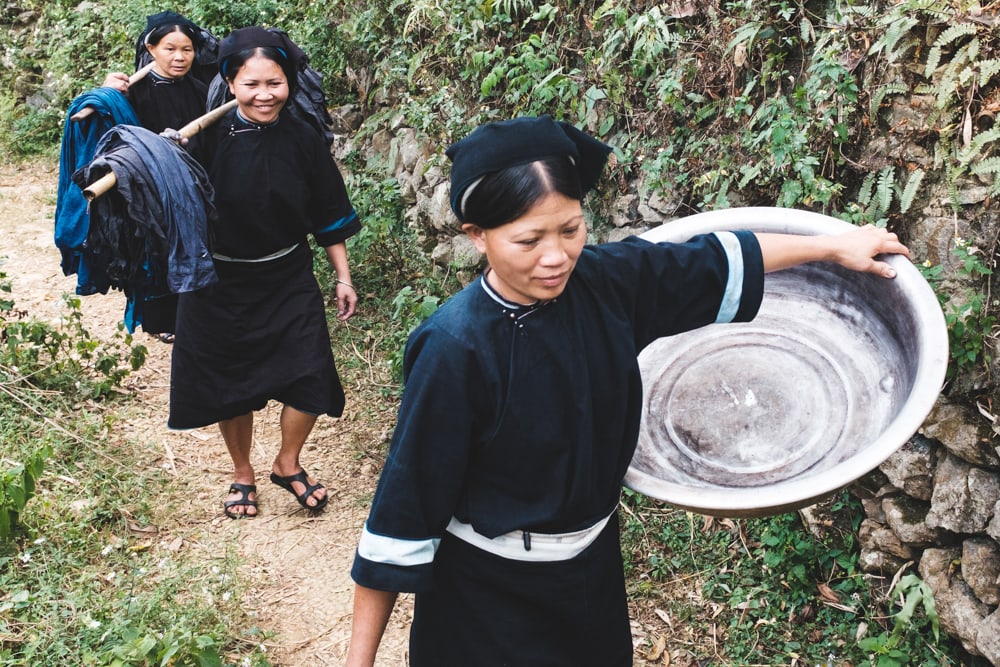
A GAP IN THE MARKET
When Vietnam opened its markets to the world in the late 1990s/early 2000s, its local consumers became exposed to global design trends. According to Vũ, “there was a huge group of wealthy, nouveau riche Vietnamese who were willing to pay premium prices for Louis Vuitton bags, Gucci shoes, and other imported luxury goods." At the same time, many local designers chose to make copies of these imports. "It was very cheap products and very expensive products and so there was a gap in between. I wanted to end that gap.”
Filling it, she says, meant steering away from the model of copycat labels in Vietnam doing mainstream, commercially-safe fashion. Vũ found that she was drawn to labels who tried to adapt and contemporize Vietnamese cultural elements in their designs but, even still, she saw some limitations in the way that many approached this process: "Those designers bought their fabrics in the market. They'd go to different places in Vietnam—either ethnic minority markets or artisan village markets—buy the fabric and bring it home to cut and design from. And this was something which I didn't want to do. I wanted to learn their techniques and transform them from the core of the techniques. " While she understood that using materials already being made could support the market, it didn't appeal to her personally. "To me, it's more cut and paste," she says. "You're not involved with the fabric-making process and you don't have that kind of control from the beginning. It's more fascinating to learn the techniques and to be able to work with the artisan and study that technique.”

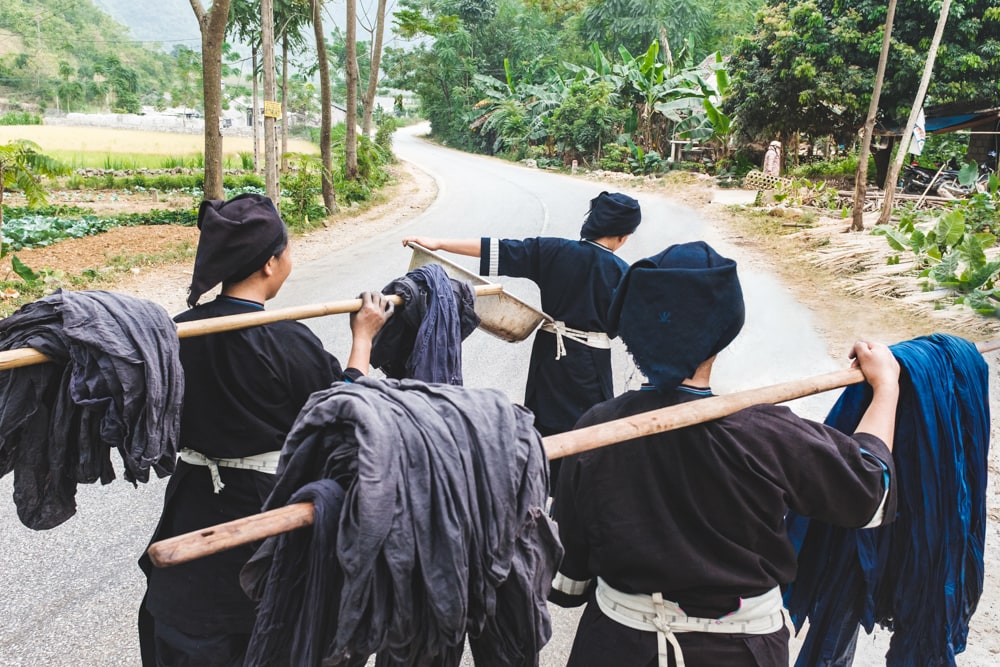
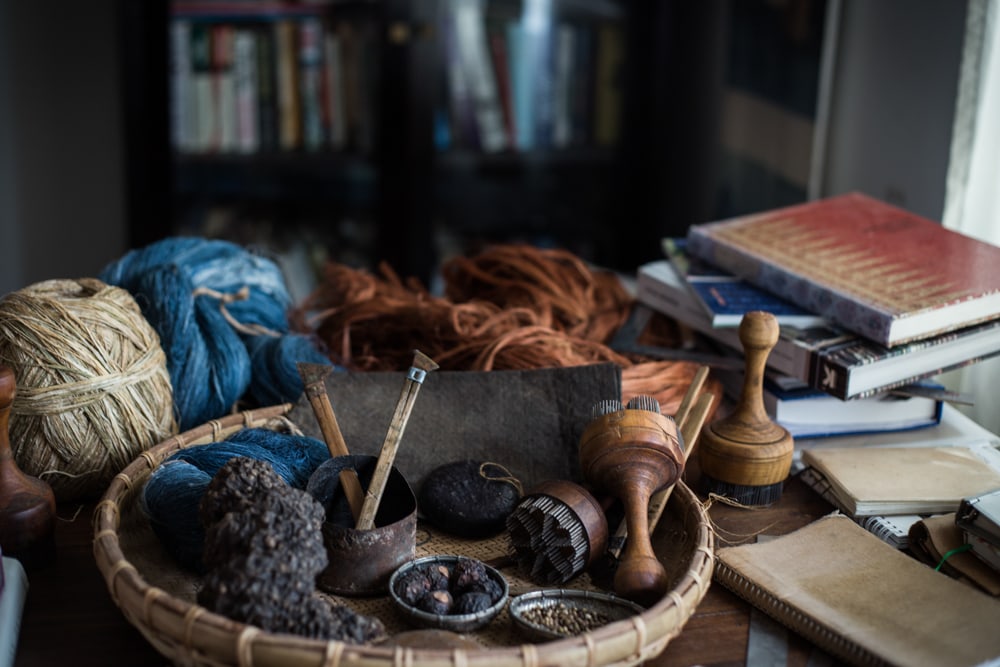
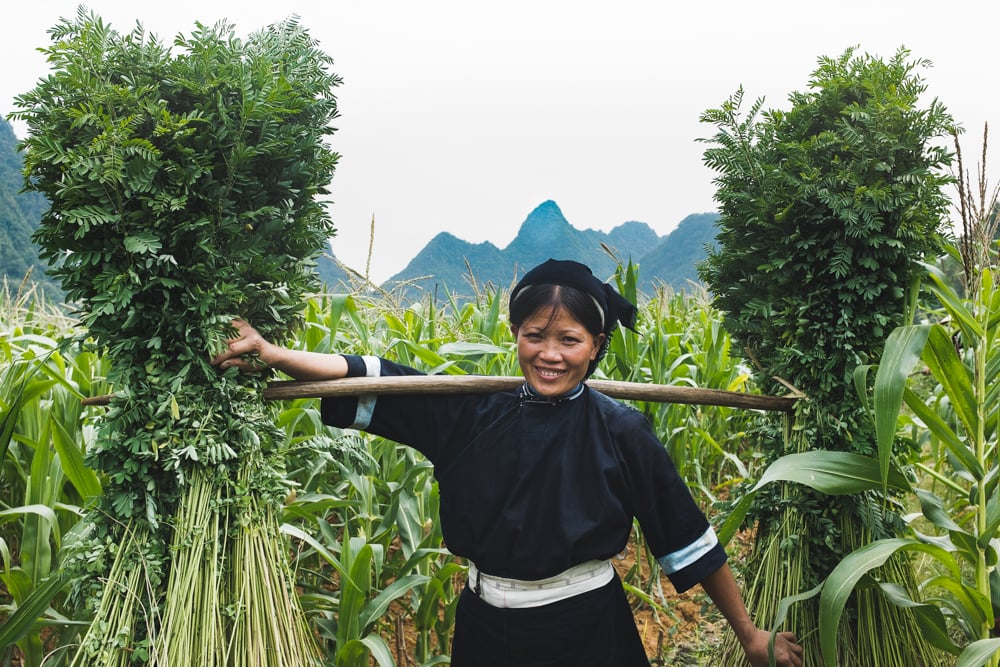
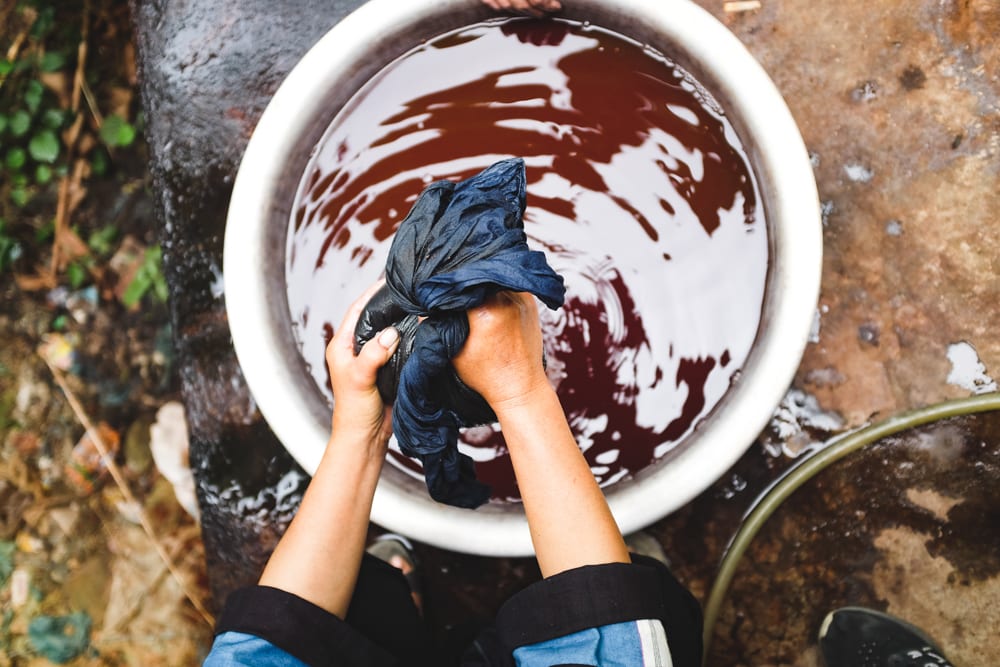
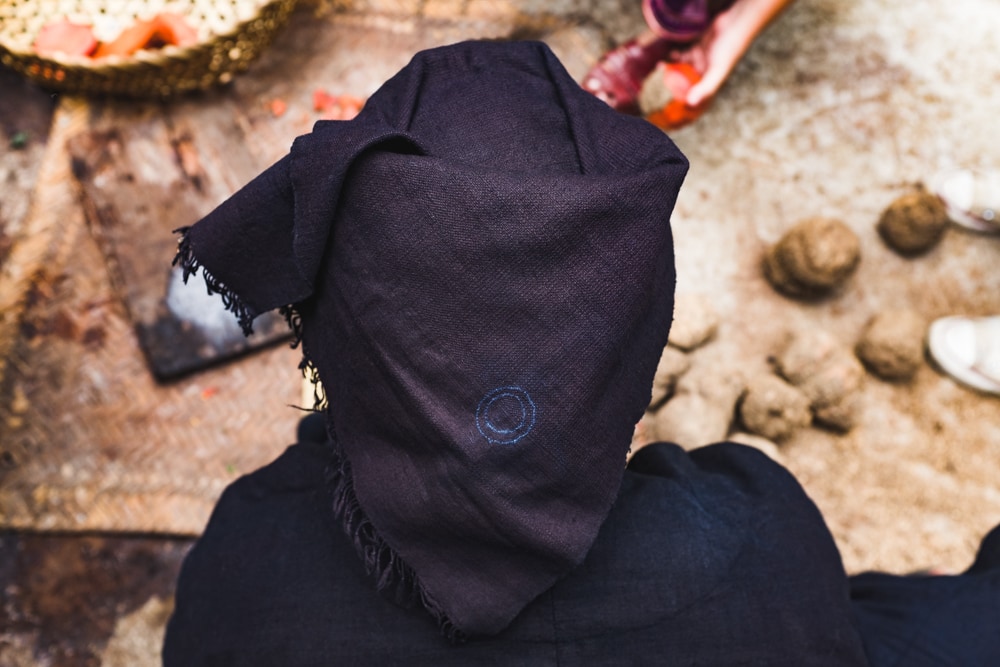
STARTING KILOMET109
Vũ launched her first collection under the Kilomet109 label in May 2012. "I wanted to have a name that had nothing associated with fashion. It's more about personal story... I wanted a word that described movement, a distance, and also a journey. 'Kilomet' is the way that the Vietnamese pronounce 'kilometer' and '109' is the distance in kilometers from Hanoi to my hometown."
There was another consideration for picking it as the name of her global-facing brand: "It's easy to pronounce in other languages," she says with a laugh.
Vũ decided to develop and release collections annually, a conscious step away from the drumbeat of a seasonal fashion calendar, but one which presented some challenges. “When you do one collection per year, you have to be thoughtful: You have to set a strategy for the range to ensure that it covers four seasons—and you've got to think about how one design can aim to appeal to different kinds of age ranges and look good on them.” As she discovered, this aesthetic was a natural fit for her clients—many of whom are creative professionals and frequent travelers: “When you travel, you want clothes that you can wear in different ways. You can't bring a lot, but you can have one garment that you can wear in different kinds of styles.”
Her first Kilomet109 collection wasn't naturally dyed, but it did have sustainable elements: Vũ used some recycled materials and, otherwise, 100% natural fibers. Cuts were contemporary and modern—with a few subtle traditional craft/artisan details. "You know, it was kind of the beginning of the journey," she says. “I was not really 100 percent sure about going completely natural and also [unsure] if there was the capacity to be able to go completely to natural dying or hand-woven fabrics.”
The following collection—"SEEDS"—was a bolder step. A mix of tailored cuts and streetwear, Vũ included lots of hoodies and multifunctional garments. It was the first time that she worked exclusively with Vietnam's Nùng An ethnic minority group, who planted the cotton and hemp and weaved — then naturally dyed — the fabrics. “SEEDS was the first collection which really captured my design philosophy and also the connections between past and present and east and west."
“PHIÊU“ — THE NEW COLLECTION
Kilomet109's latest offering, “PHIÊU", takes its name from a Vietnamese word that means 'a journey without plans'. “This collection was heavily influenced by travel by me and the whole team. You know, the fabrics are sent by night bus. And I had to travel to so many places… it was like constantly traveling. And so I wanted to capture that in the collection — the photoshoot and the design as well.”
Vũ's designs were intended to be travel-friendly and a wardrobe that could be worn for the whole day. PHIÊU was intended to mix casual and dressy pieces that were multifunctional and versatile—and the resulting collection reflects the "take whatever the road offers you" spirit of its name.
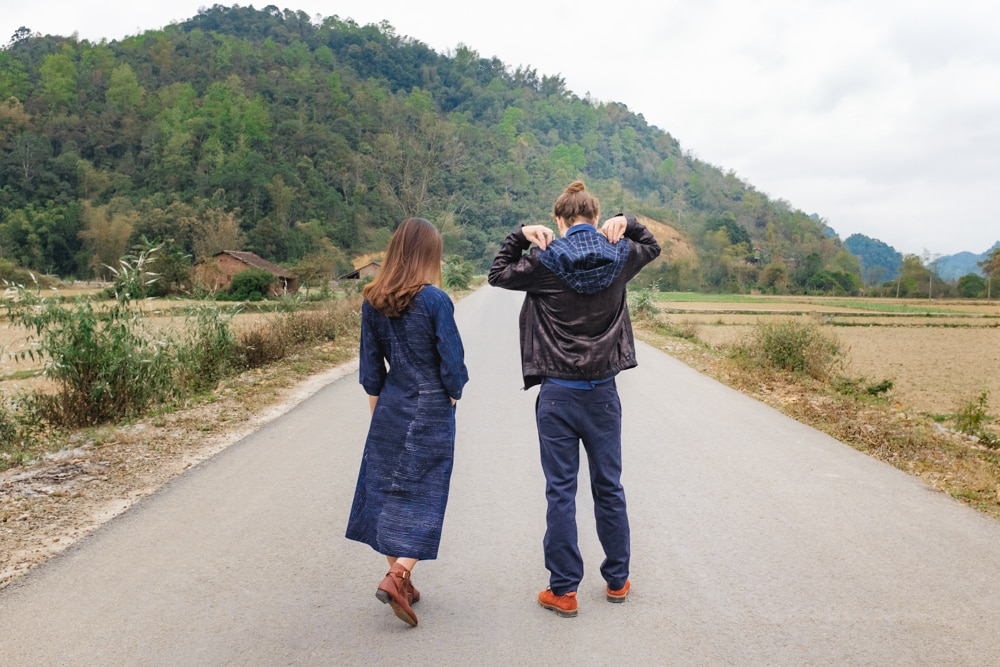
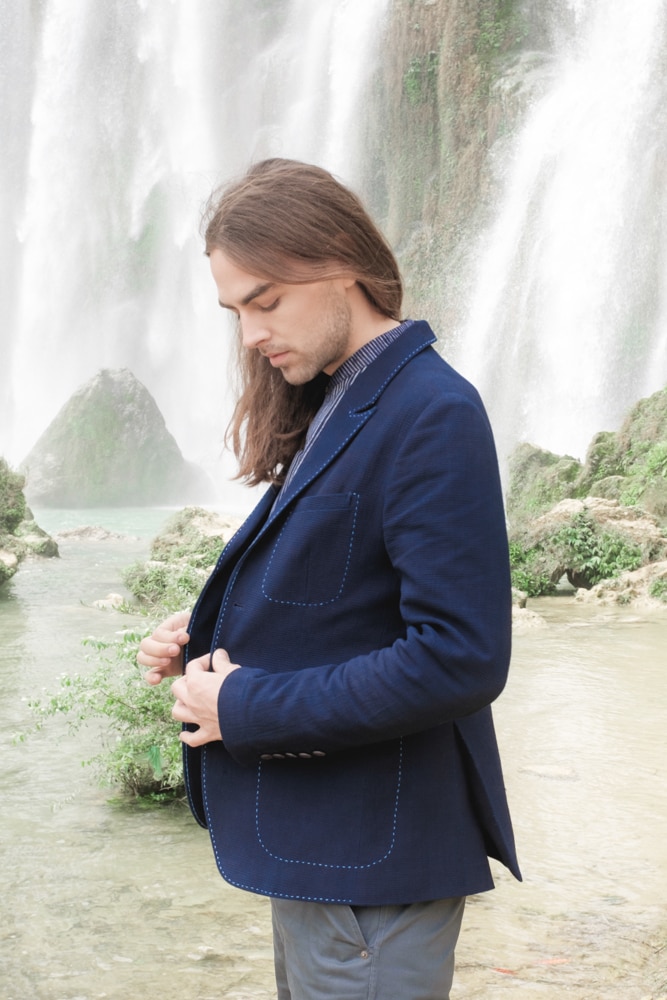
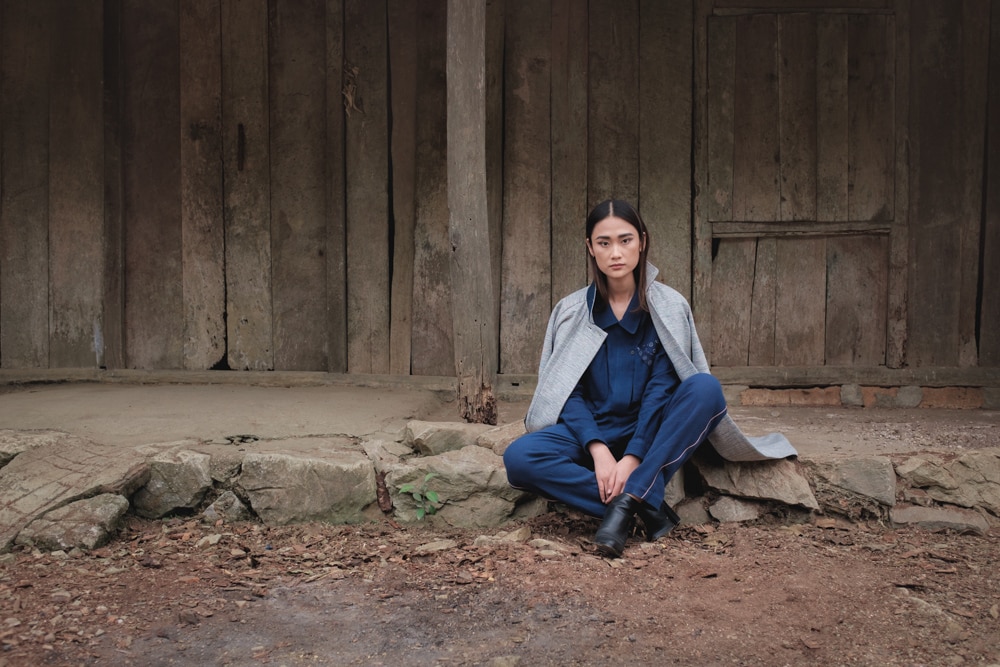
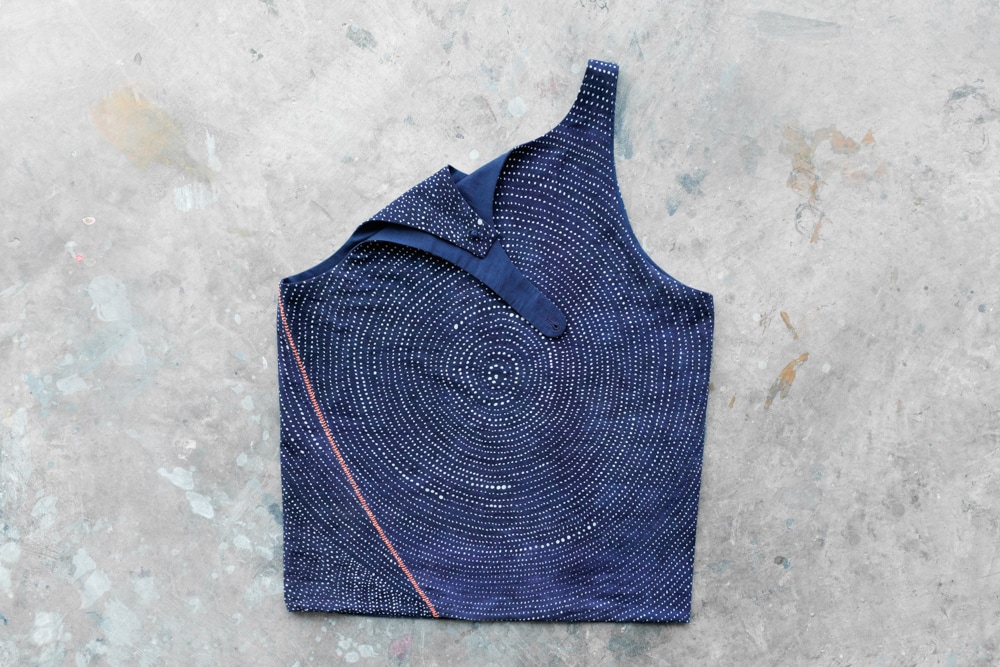
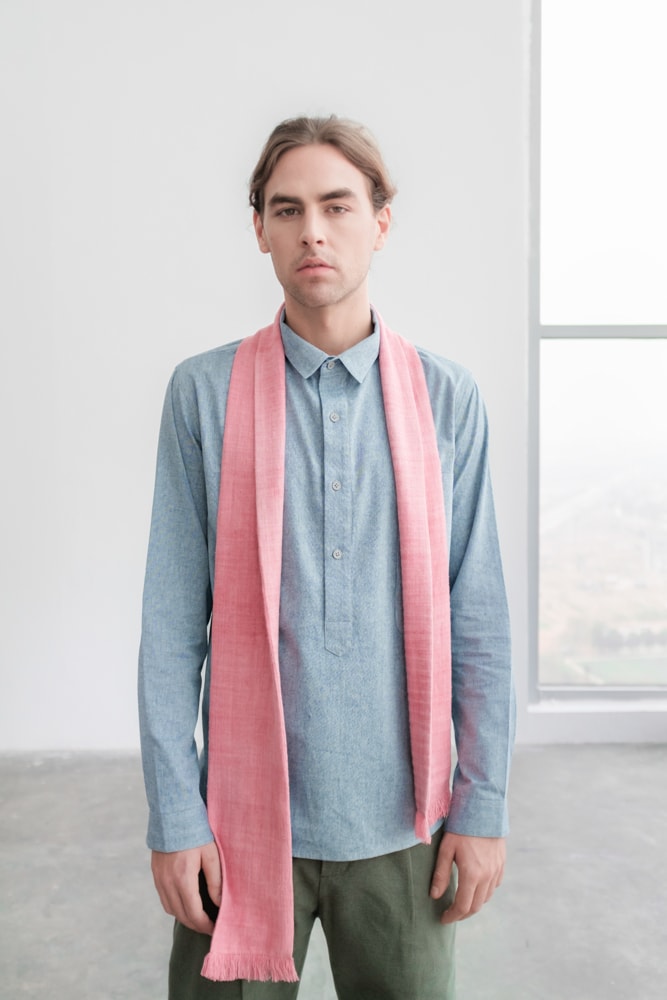
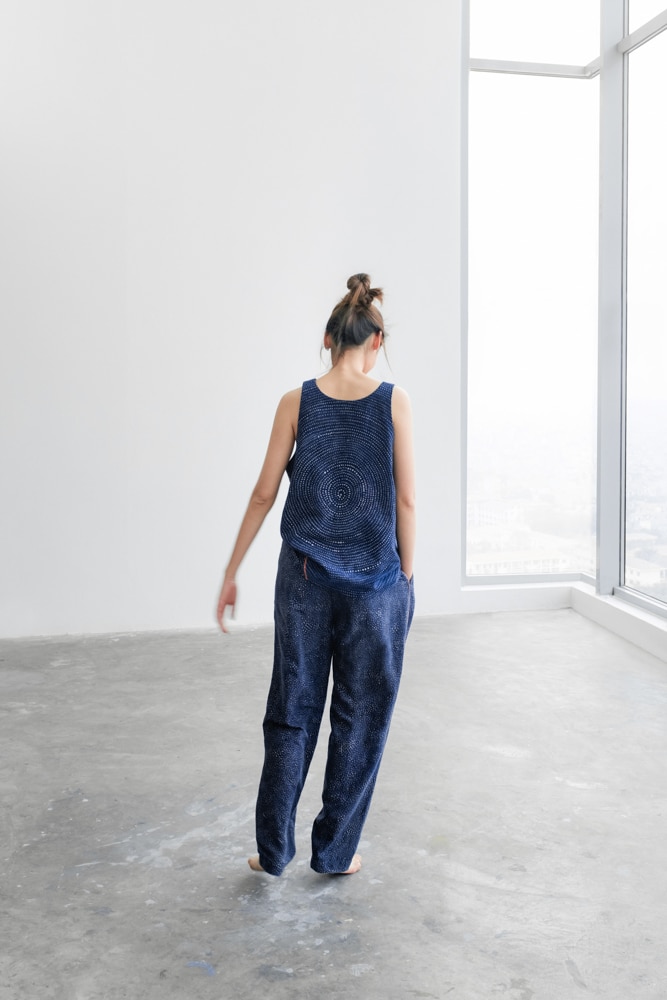
It also marks the first time that Kilomet109 is working with more than one ethnic minority group. “I now work with four different groups. Each of them play different roles and did different techniques for the collections.” The Nùng An artisans did the weaving and natural dying; Black H’mong artisans did the planting, weaving, indigo dyeing, and calendaring techniques, while the Blue H'Mong did batik and Thái artisans did selected weavings. Once she had taken the time to learn what each group excelled at, Vũ's challenge was then to bring all the design elements together in one product that felt harmonized and cohesive.
Vũ worked with each group to help transform some traditional practices to contemporize them or improve their efficiency. One example: She co-developed a streamlined batik design with her Blue H'mong artisans which would minimize the number of tools they needed to execute it. Although their initial reaction was somewhat skeptical, the artisans adapted quickly once Vũ explained the collection's concept and then they even suggested their own improvements.
Vũ's former teaching experience came in handy on several occasions, she says. Working with the artisans meant she had to be patient, willing to explain things, and accept that mistakes were part of the development process. In the case of the collection's Stripe Dress, it went a step further — actually embracing an imperfection discovered in the sampling process as a core part of the eventual design. The Blue H'mong use small, low worktables to do their batik work: Only about 60 cm wide, this means artisans have to move the fabric on and off the surface more frequently. The result, Vũ says, is that the lines in the final pattern have a slight overlap.
"To me, it’s beautiful and looks like a painting," she says. Vũ loved the result and decided to cancel an order for larger worktables — and even accentuated the overlapping effect in subsequent designs. This decision provided considerable relief to the batik artists. "They said 'Oh my god! We were worried that you would be really upset and angry!” and I was like: 'No, this is beautiful. Keep doing it!'"
The label doesn't have its own retail space and Vũ credits Kilomet109's frequent trunk shows and pop-up events with helping her tune into how customers will respond to her work. “I think it's so important for designers to be involved in the business side," she says, attributing the label's rapid growth to this close connection and direct communication. "You understand the audience better and you understand the market — the real market — much better.”
As this growing market embraces Kilomet109's 'slow fashion' philosophy, Vũ recognizes that, in many ways, her personal journey from the countryside into the city mirrors the road by which traditional artisan techniques are entering into the world of contemporary design.
"Consumers like knowing the story of the products... and so I think it's a perfect time for me to tell my story.”
